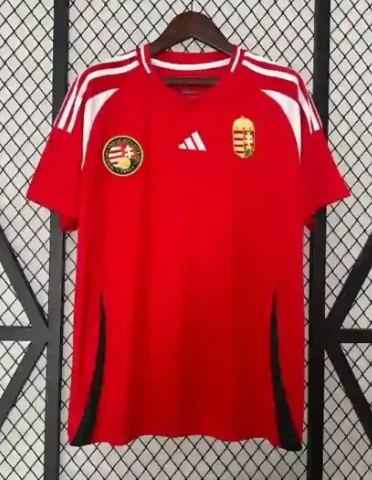hungary soccer jerseys football YUPOO china B2B2C Wholesale Supplier Branded national hungary soccer jerseys retro shirts, join us on whatsapp | Yupoo fashion national hungary soccer jerseys players jerseys football retro jerseys reseller online store , Yupoo jerseys Replica top version for yupoo wholesale drop shipping jerseys to worldwide.
Hungary's soccer history is a rich and storied narrative that reflects the country’s cultural heritage, historic achievements, and lasting impact on the global footballing landscape. The Hungarian national team, once dubbed the "Mighty Magyars," became one of the most dominant teams in world football during the 1950s. This overview will detail the evolution of soccer in Hungary, its greatest successes, influential players, and the enduring legacy of its footballing culture.
Soccer was introduced to Hungary in the late 19th century, primarily through British expatriates and local enthusiasts. The first documented match took place in 1887, fostering interest in the sport among the Hungarian populace. The Hungarian Football Federation (MLSZ) was established in 1901, and the first national championship commenced in 1903, marking the formal organization of soccer in the country.
Throughout the early 20th century, soccer clubs such as Ferencvárosi TC, MTK Budapest, and Újpest FC emerged, creating a competitive domestic league. These clubs played a pivotal role in developing local talent and fostering a thriving football culture.
The 1930s marked a period of growth and success for Hungarian football. The national team established itself on the international stage, notably reaching the semifinals of the 1938 FIFA World Cup, where they finished as runners-up to Italy. The squad boasted incredible talent, including players such as Géza Kertész, László Tichy, and Gyula Grosics. However, it was the 1950s that would become synonymous with Hungarian football excellence.
The 1950s heralded the apex of Hungarian soccer, characterized by the emergence of the "Mighty Magyars." This legendary team was known for its innovative playing style, technical prowess, and tactical intelligence. Led by visionary coach Gustav Sebes, Hungary showcased a fluid and attacking style of football that revolutionized the game.
One of the defining moments for the Mighty Magyars came in 1953 when they faced England at Wembley Stadium. In a stunning upset, Hungary defeated the English team 6-3, a victory that altered perceptions of footballing hierarchies. The match is often referred to as "The Match of the Century" and is still remembered as one of the most significant victories in football history.
Hungary achieved remarkable success in the 1954 FIFA World Cup held in Switzerland. The team cruised through the tournament, winning matches with flair and authority. However, in a fateful final against West Germany, the Mighty Magyars faced an unexpected defeat. Leading 2-0, Hungary ultimately lost 3-2 in what became known as the "Miracle of Bern." This shocking result left an indelible mark on Hungarian football and the nation's psyche.
Following the World Cup defeat, Hungary's footballing fortunes declined. The political and social upheaval stemming from the 1956 Revolution had a profound impact on the country, leading to an exodus of talent as many players defected to pursue careers abroad. The golden generation began to dissipate, and the national team struggled to regain its former glory.
Despite these challenges, Hungarian football continued to produce talented players who made their mark in various European leagues. Clubs like Ferencvárosi TC and Honvéd FC remained competitive in both domestic and European tournaments.
The 1960s and 1970s saw Hungary making progress on the international stage, albeit with ups and downs. The national team qualified for the 1964 UEFA European Championship and reached the semifinals, ultimately finishing in fourth place. The emergence of players such as Ferenc Puskás and József Bozsik during this era showcased Hungary's continuing legacy of football excellence.
However, the national team faced difficulties in qualifying for major tournaments in the following decades, often falling short in qualification campaigns. The decline of the national team was reflected in their absence from both the World Cup and European Championship competitions during the 1980s and 1990s.
The turn of the century brought renewed hope for Hungarian football. The national team began to rebuild and reestablished itself in international competitions. Hungary qualified for the UEFA European Championship in 2016, marking their return to a major tournament for the first time in 44 years. The team performed admirably in the group stage, ultimately advancing to the knockout rounds and garnering respect for their fighting spirit and resilience.
In addition, Hungarian clubs began to re-emerge in European competitions during the 2000s. Ferencvárosi TC and MOL Vidi FC became competitive in European tournaments, which contributed to the overall improvement and visibility of Hungarian football.
Hungary's contribution to the global football landscape is

